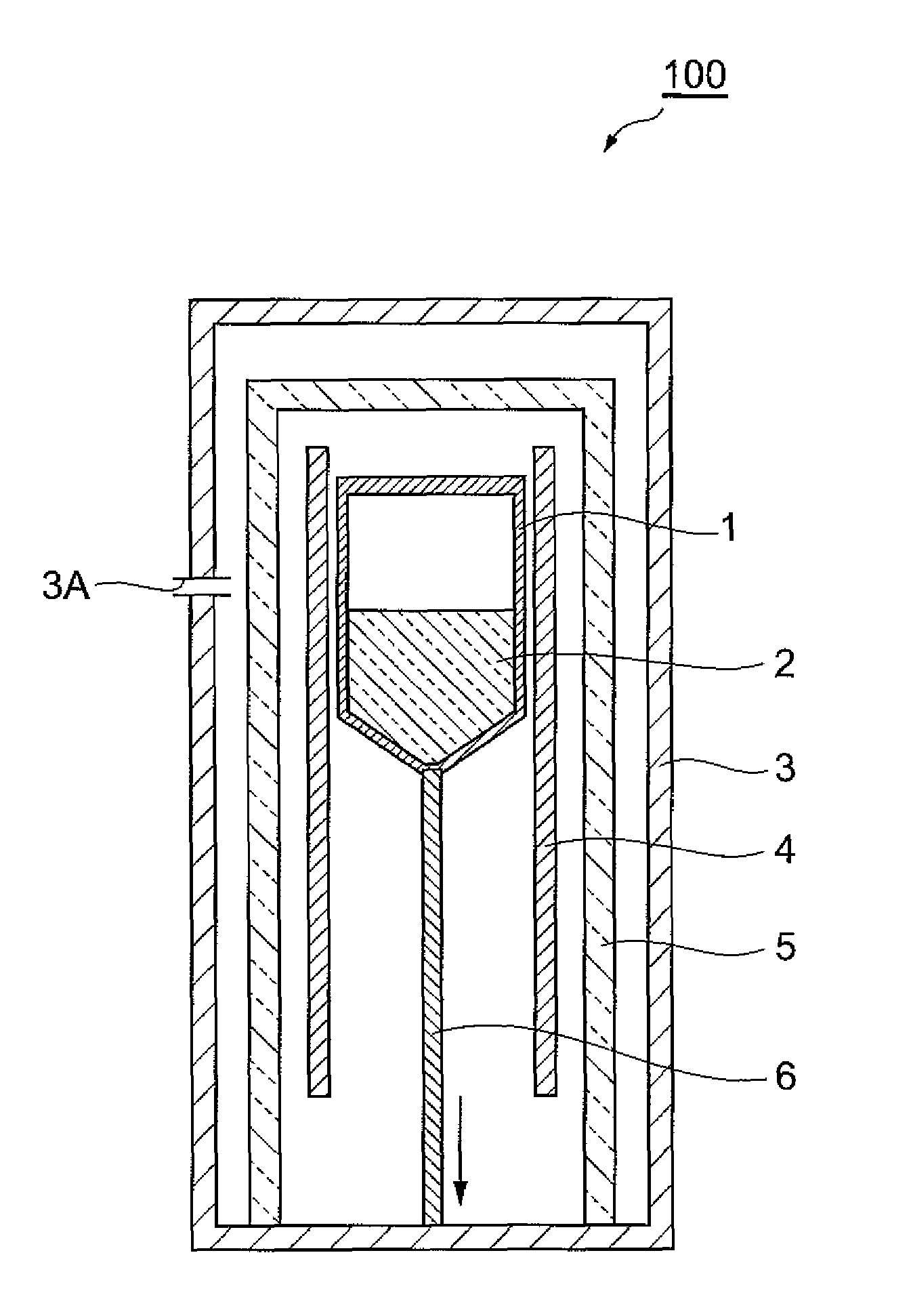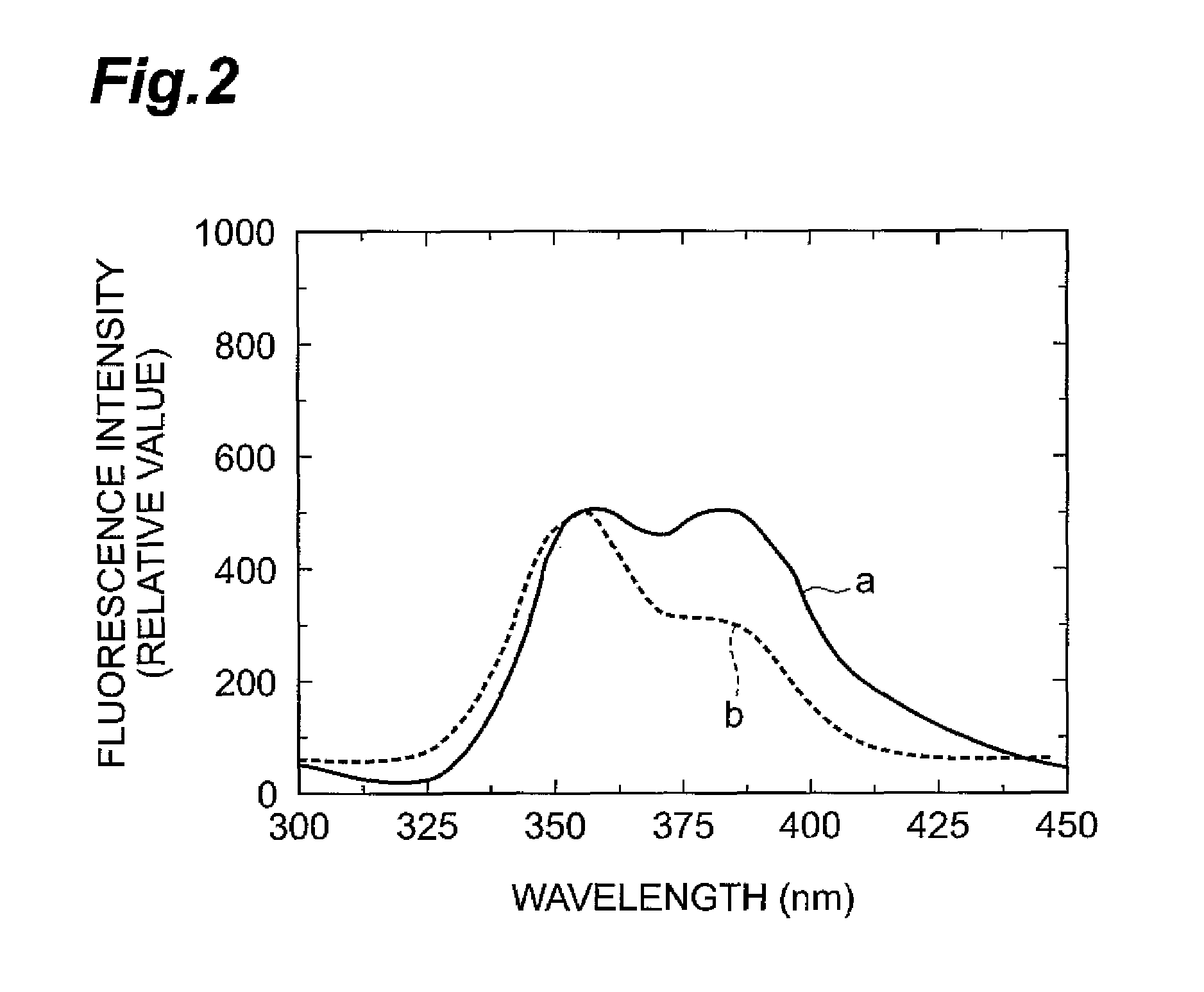Scintillator crystal and radiation detector
a scintillator and radiation detector technology, applied in the direction of instruments, x/gamma/cosmic radiation measurement, crystal growth process, etc., can solve the problem of rendering the scintillator unsuitable for a photomultiplier tube, and achieve the effect of high transparency and greater fluorescen
- Summary
- Abstract
- Description
- Claims
- Application Information
AI Technical Summary
Benefits of technology
Problems solved by technology
Method used
Image
Examples
example 1
[0071]The starting matrix material for the scintillator crystal comprised 25 g of LaBr3 (99.99% purity, product of Aldrich Co.) and 0.125 g of CeBr3 (99.99% purity, product of Aldrich Co.). The dopant starting material for the scintillator crystal comprised 2.5125 mg of NaBr (99.99% purity, product of Aldrich Co.), 2.5125 mg of FeBr2 (99.99% purity, product of Aldrich Co.) and 2.5125 mg of NiBr2 (99.99% purity, product of Aldrich Co.). The matrix starting material and dopant starting material were combined to obtain a mixture.
[0072]The obtained mixture was loaded into a quartz ampule, and the interior of the quartz ampule was reduced in pressure to 1 Pa and hermetically sealed in that state. The quartz ampule was then set in a prescribed location of a VB furnace.
[0073]This was followed by single crystal growth by the Bridgman method in the manner described below. First, the heater was heated to 800° C. and the quartz ampule was held for 24 hours in that state to melt the mixture. Th...
example 2
[0074]A single crystal was produced in the same manner as Example 1, except that 5.025 mg of NaBr (99.99% purity, product of Aldrich Co.) was used as the dopant starting material for the scintillator crystal.
example 3
[0075]A single crystal was produced in the same manner as Example 1, except that 5.025 mg of FeBr2 (99.999% purity, product of Aldrich Co.) was used as the dopant starting material for the scintillator crystal.
PUM
| Property | Measurement | Unit |
|---|---|---|
| fluorescent wavelength | aaaaa | aaaaa |
| fluorescent wavelength | aaaaa | aaaaa |
| sensitivity wavelength peak | aaaaa | aaaaa |
Abstract
Description
Claims
Application Information
 Login to View More
Login to View More - R&D
- Intellectual Property
- Life Sciences
- Materials
- Tech Scout
- Unparalleled Data Quality
- Higher Quality Content
- 60% Fewer Hallucinations
Browse by: Latest US Patents, China's latest patents, Technical Efficacy Thesaurus, Application Domain, Technology Topic, Popular Technical Reports.
© 2025 PatSnap. All rights reserved.Legal|Privacy policy|Modern Slavery Act Transparency Statement|Sitemap|About US| Contact US: help@patsnap.com



